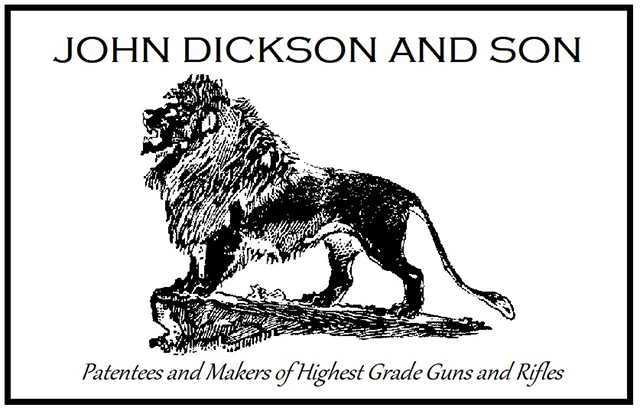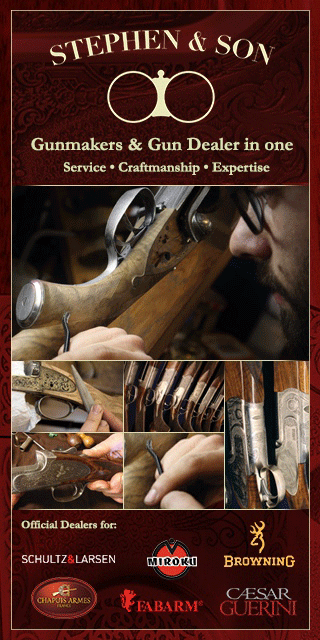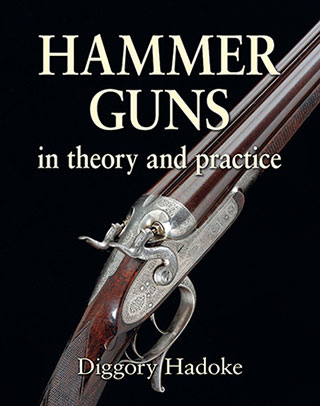I’m often asked about the process involved in taking a ‘sleeper’ and restoring it. So, when a nice Charles Boswell pigeon gun came up, I decided to make it the subject of a series of articles charting its journey from the attic to the field.
There are still guns hidden under beds and stuck under eves all around the country. We think they have all been found but a trickle keeps flowing into the market, after long years hidden away.
One such gun arrived in my possession this summer. It had been stored in an attic for 40 years and when the owner died, his son found it and called me. It involved a fair drive on the off chance that it may be a good find. Many such journeys result in disappointment but this one was a pleasant surprise.

Atop the coffee table sat a gun built in 1898 for shooting live pigeon competitions. It sported the telltale side-clips, flat, filed, rib and semi-pistol grip stock and weighed 7lbs 4oz with 30” barrels. The locks are bar-action and the hammers cock low, though it retains percussion type fences. Bolting involved Purdey double under-bolt and Greener bolted rib extension. Interestingly the latter is of the type which does not emerge from the side of the fence when operated. This is a feature Greener only incorporated in his better guns. Engraving is typical scroll work of the era. So, first impressions were good. We have a quality gun in an unusual configuration; one which has a strong following. What of the condition?
Having been stored in an attic for decades, the gun showed typical scars of this environment. There were a few dents and scratches on the stock, the finish was faded and dirty. The metalwork had dried-on oil and lots of dust and the trigger-guard strap rose proud of the wood, pushed up by rust forming between the two materials.

The finish was tired but it was original. The gun showed no signs of gun smithing. It was a little loose but bores looked good. All the pins lined-up and none had enlarged slots. chequer was in-filled with grime and showed some wear but it had never been re-cut. blacking, browning etc was all original. I guessed the gun had been received in good condition and put away. It showed no signs of routine maintenance.
So, a true ‘sleeper’. Just what I like to find. I handed over a grand and took away my new project. The turnscrews turned! always a good sign. The old grease still did its job and the locks and action came off the wood to reveal dried grease and oil, rust and dust. Into a bath of surgical spirit for the night. Job one is to clean off the years of grime and see what lies beneath.
Well made guns are burnished where it matters. This means the metal parts like the springs and sears are rubbed with steels until the pores close on the surface, making the parts far less susceptible to rust. Even after decades in alternate heat and damp the lockwork cleaned up bright and functioned perfectly.

Surface pitting where the wood and metal meet is common and there was some, but not too severe. The grime came off the stock and the chequer cleaned out nicely. The head of the stock was free from splits or serious mineral oil damage and, once the brass wire brush, surgical spirit and fine wire wool were put away, a clean and eminently restorable gun emerged. Having taken stock, a restoration process was outlined. It included:
Re-joint the gun (making the barrels fit properly on the action, as they were loose)
Fully strip and polish the locks, re-blue pins and furniture
Refresh the chequer to hand and forend
Steam out the dents, paper, colour and oil-finish the stock and forend
I decided the original barrel browning could stay, despite being a little rough, as it was a good contrast and preserved some originality. The tubes were free from dents and the bores excellent, though enlarged from honing. Wall thickness measurements showed minimums of 28 and 29 thou.

Specifications
Made:1898
Maker: Charles Boswell, The Strand, London
Serial No: 13425
Gauge: 12-bore
Operation: Top-lever with Greener lever-work, Purdey bolt
Barrels: 30” damascus
Proof: 2 ½” chambers, black powder
Rib: Filed, flat ‘pigeon’ rib
Chokes: ¾ and ¾
Stock: 14 ½” semi-pistol grip
Forend: Splinter with Anson pushrod catch
Locks: Bar action, low hammer
Action: Long bar with deep, side-clipped fences and Greener bolted rib extension
Weight: 7lbs 4oz
Having got rid of enough grime to see what the score was, I made out a work sheet and drove over to the workshop to see Dave. I know my limitations and it was time for proper gunmaker to do the rest of the work.

Published by Vintage Guns Ltd on (modified )



